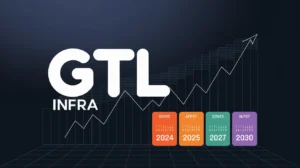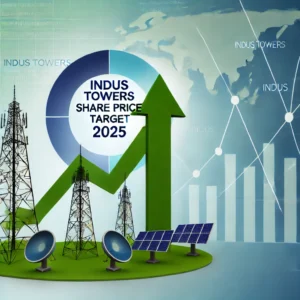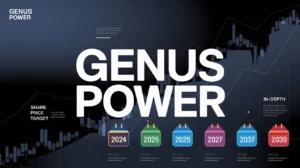- Introduction
- About Bajaj Auto Limited
- Bajaj Auto Ltd. Fundamentals
- Bajaj Auto Ltd. Profit & Loss – Last 3 Years
- Bajaj Auto Ltd. Balance Sheet – Past 3 Years
- Bajaj Auto Ltd. Cash Flow – Last 3 Years
- Bajaj Auto Share Price Target 2025
- Bajaj Auto Share Price Target 2026
- Bajaj Auto Share Price Target 2027
- Bajaj Auto Share Price Target 2030
- Bajaj Auto Share Price Target 2040
- FAQs
- What are the projected share prices for Bajaj Auto in 2025?
- What factors contribute to the share price target for 2026?
- How will Bajaj Auto's expansion affect its share price by 2027?
- What is the expected share price range for Bajaj Auto in 2030?
- What challenges might Bajaj Auto face in achieving its 2040 share price target?
- How significant is Bajaj Auto's focus on electric vehicles for its future growth?
- What role do strategic partnerships play in Bajaj Auto's growth strategy?
- How does Bajaj Auto's commitment to sustainability impact its market position?
- What are the key risks that investors should consider when investing in Bajaj Auto?
- Why is continuous investment in research and development important for Bajaj Auto?
- Conclusion
Introduction

Explore the future of Bajaj Auto’s share price with our in-depth analyst report! Unlock the Bajaj Auto Share Price Target 2024, 2025, 2030, 2040, and 2050 in this comprehensive analysis. Join us on a journey as we dissect the driving forces influencing the outlook of Bajaj Auto’s stock in the years to come.
About Bajaj Auto Limited
Bajaj Auto Ltd. – Vision
The integrity, dedication, resourcefulness, and determination to succeed which are characteristic of the group today, are often traced back to its birth during those days of relentless devotion to a common cause.
Bajaj Auto Ltd. Company Profile
Company: Bajaj Auto Ltd.
Founded: 1945 (79 years old)
Ownership: Public
India Employee Count: 5k-10k
Global Employee Count: 10k-50k
Headquarters: Pune, Maharashtra, India
Office Locations: New Delhi, Nagpur, Mumbai
Type of Company: Indian MNC
Nature of Business: Product
Target Market: B2C
Website: bajajauto.com
Bajaj Auto Ltd. Fundamentals
| Metric | Value |
| Market Cap | ₹ 2,06,776.44 Cr. |
| Enterprise Value | ₹ 2,06,614.92 Cr. |
| No. of Shares | 28.32 Cr. |
| P/E | 32.18 |
| P/B | 8 |
| Face Value | ₹ 10 |
| Div. Yield | 1.92 % |
| Book Value (TTM) | ₹ 896.29 |
| Cash | ₹ 285.75 Cr. |
| Debt | ₹ 124.23 Cr. |
| Promoter Holding | 54.94 % |
| EPS (TTM) | ₹ 226.90 |
| Sales Growth | 9.90% |
| ROE | 21.64 % |
| ROCE | 28.46% |
| Profit Growth | 12.13 % |
Bajaj Auto Ltd. Profit & Loss – Last 3 Years
| Particulars | Mar 2021 | Mar 2022 | Mar 2023 |
| Net Sales | 27,741 | 33,144.71 | 36,428 |
| Total Expenditure | 22,818 | 27,908.18 | 29,880 |
| Operating Profit | 4,923 | 5,236.53 | 6,547 |
| Other Income | 1,282.03 | 1,231.35 | 1,183.42 |
| Interest | 7 | 8.66 | 39.48 |
| Depreciation | 259 | 269.17 | 282.44 |
| Exceptional Items | 15 | 0 | 0 |
| Profit Before Tax | 5,939 | 6,505.33 | 7,408.64 |
| Tax | 1,384 | 1,486.46 | 1,781.04 |
| Net Profit | 4,555 | 5,018.87 | 5,627.60 |
| Adjusted EPS (Rs.) | 157 | 173.44 | 198.88 |
Bajaj Auto Ltd. Balance Sheet – Past 3 Years
| Details | Mar 2021 | Mar 2022 | Mar 2023 |
| Share Capital | 289 | 289.37 | 283 |
| Total Reserves | 24,913 | 26,379.43 | 25,143 |
| Borrowings | 121 | 122.77 | 124 |
| Other N/C liabilities | 563.27 | 440.93 | 379.56 |
| Current liabilities | 5,643 | 4,689.44 | 5,198.04 |
| Total Liabilities | 31,530 | 31,921.94 | 31,127.69 |
| Net Block | 1,613 | 1,782.89 | 2,665.99 |
| Capital WIP | 16 | 76.82 | 81.92 |
| Intangible WIP | 0 | 0.00 | 0.00 |
| Investments | 14,603 | 18,849.63 | 18,503.96 |
| Loans & Advances | 1,055 | 1,119.52 | 954.35 |
| Other N/C Assets | 69 | 98.61 | 51.06 |
| Current Assets | 14,175.13 | 9,994.47 | 8,870.41 |
| Total Assets | 31,530.20 | 31,921.94 | 31,127.69 |
Bajaj Auto Ltd. Cash Flow – Last 3 Years
| Particulars | Mar 2021 | Mar 2022 | Mar 2023 |
| Profit from operations | 5,939 | 6,505.33 | 7,409 |
| Adjustment | -975 | -1,196.79 | -701 |
| Changes in Assets & Liabilities | -511 | 600.57 | 723 |
| Tax Paid | -1,339.69 | -1,701.54 | -1,918.41 |
| Operating Cash Flow | 3,114 | 4,207.57 | 5,511.89 |
| Investing Cash Flow | -2,867 | -92.40 | 1,322.42 |
| Financing Cash Flow | -20 | -4,056.33 | -7,178.86 |
| Net Cash Flow | 228 | 58.84 | -344.55 |
Bajaj Auto Share Price Target 2025
Year: 2025
Bajaj Auto Share Price Target: INR 6,500 to INR 7,800
Technical Analysis:
- Minimum target: INR 6,500
- Maximum target: INR 7,800
Fundamental Analysis:
- Expansion Plans: Bajaj Auto is likely to continue expanding its presence in international markets, particularly in Southeast Asia and Africa. This expansion is expected to contribute significantly to revenue growth.
- Product Diversification: The introduction of new models, including electric vehicles (EVs), will diversify the product portfolio and cater to the increasing demand for eco-friendly transportation.
- Innovation and R&D: Continuous investment in research and development will enable Bajaj Auto to stay ahead in technology and innovation, ensuring a competitive edge.
Potential Challenges:
- Market Competition: Increased competition from other established players in the automobile industry could impact market share.
- Economic Factors: Global economic conditions, including inflation and currency fluctuations, may affect profitability.
Bajaj Auto Share Price Target 2026
Year: 2026
Bajaj Auto Share Price Target: INR 7,500 to INR 8,900
Technical Analysis:
- Minimum target: INR 7,500
- Maximum target: INR 8,900
Fundamental Analysis:
- Technological Advancements: The company is expected to leverage advanced technologies in manufacturing and product development, enhancing efficiency and product quality.
- Sustainability Initiatives: Bajaj Auto’s commitment to sustainability and green energy solutions will likely improve its brand image and attract environmentally conscious consumers.
- Strategic Partnerships: Forming strategic alliances and partnerships with other technology and automobile companies can lead to innovation and market expansion.
Potential Challenges:
- Regulatory Changes: Changes in government policies and regulations related to the automobile industry, emissions, and environmental standards could pose challenges.
- Supply Chain Disruptions: Disruptions in the supply chain, particularly for critical components, can impact production and sales.
Bajaj Auto Share Price Target 2027
Year: 2027
Bajaj Auto Share Price Target: INR 8,269 to INR 10,200
Technical Analysis:
- Minimum target: INR 8,269
- Maximum target: INR 10,200
Fundamental Analysis:
- Global Market Penetration: Bajaj Auto’s increasing market penetration in new regions will bolster its revenue streams.
- Production Capacity: Enhanced production capacity and modernization of manufacturing facilities will support higher output and efficiency.
- Research and Development: Strong focus on R&D will facilitate the development of innovative and high-demand products, maintaining market leadership.
Potential Challenges:
- Regulatory Compliance: Ensuring compliance with varying regulations across different countries can be complex and costly.
- Raw Material Prices: Fluctuations in raw material prices could impact manufacturing costs and margins.
Bajaj Auto Share Price Target 2030
Year: 2030
Bajaj Auto Share Price Target: INR 14,000 to INR 16,356
Technical Analysis:
- Minimum target: INR 14,000
- Maximum target: INR 16,356
Fundamental Analysis:
- Electric Vehicles Market: Bajaj Auto is expected to establish a strong foothold in the electric vehicle market, capitalizing on the shift towards sustainable transportation.
- Global Expansion: Continued expansion into international markets will drive growth and revenue diversification.
- Product Portfolio: A diversified product portfolio, including both traditional and electric vehicles, will cater to a broad customer base.
Potential Challenges:
- Technological Disruptions: Rapid advancements in technology may require continuous innovation to stay competitive.
- Trade Policies: Changes in international trade policies and tariffs can impact export and import dynamics.
Bajaj Auto Share Price Target 2040
Year: 2040
Bajaj Auto Share Price Target: INR 25,004 to INR 27,300
Technical Analysis:
- Minimum target: INR 25,004
- Maximum target: INR 27,300
Fundamental Analysis:
- Market Leadership: Bajaj Auto is anticipated to maintain its leadership position in both the traditional and electric vehicle segments.
- Technological Integration: Integration of advanced technologies, such as autonomous driving and AI, will enhance product offerings and market appeal.
- Sustainable Practices: Commitment to sustainable manufacturing and eco-friendly practices will align with global environmental standards and attract a growing segment of eco-conscious consumers.
Potential Challenges:
- Economic Volatility: Long-term economic volatility and market uncertainties can impact financial performance.
- Regulatory Landscape: Navigating the complex and evolving regulatory landscape across different regions will require strategic planning and adaptability.
Also Read: Tata Steel Share Price Target 2024, 2025, 2030, 2040, 2050
FAQs
How significant is Bajaj Auto’s focus on electric vehicles for its future growth?
Bajaj Auto’s focus on electric vehicles is crucial for its future growth, as the demand for eco-friendly transportation solutions is expected to rise, providing new revenue streams and enhancing market competitiveness.
What role do strategic partnerships play in Bajaj Auto’s growth strategy?
Strategic partnerships play a vital role in Bajaj Auto’s growth strategy by facilitating innovation, expanding market reach, and enhancing product offerings through collaborative efforts.
How does Bajaj Auto’s commitment to sustainability impact its market position?
Bajaj Auto’s commitment to sustainability enhances its market position by aligning with global environmental standards, attracting eco-conscious consumers, and promoting a positive brand image.
What are the key risks that investors should consider when investing in Bajaj Auto?
Investors should consider risks such as regulatory changes, market competition, economic volatility, and supply chain disruptions, which could impact the company’s performance and share price.
Why is continuous investment in research and development important for Bajaj Auto?
Continuous investment in research and development is important for Bajaj Auto to stay ahead in technology and innovation, ensuring competitive advantage and the ability to meet evolving consumer demands.
Conclusion
Bajaj Auto has shown remarkable resilience and growth in the past few years, and its future prospects appear promising. The company’s strategic initiatives, including expansion into international markets, a strong focus on research and development, and a commitment to sustainability, position it well for continued success. The projected share price targets from 2025 to 2040 reflect a positive outlook, driven by product diversification, technological advancements, and a robust global presence. Investors should keep an eye on potential challenges such as regulatory changes, market competition, and economic volatility, which could impact future performance. Overall, Bajaj Auto remains a strong contender in the automobile industry, with the potential to deliver substantial returns to its shareholders.








